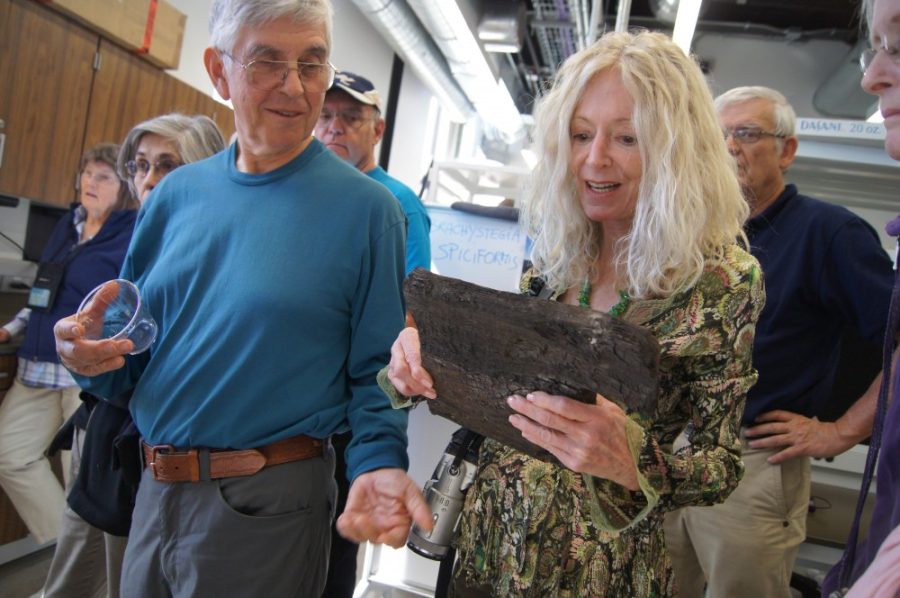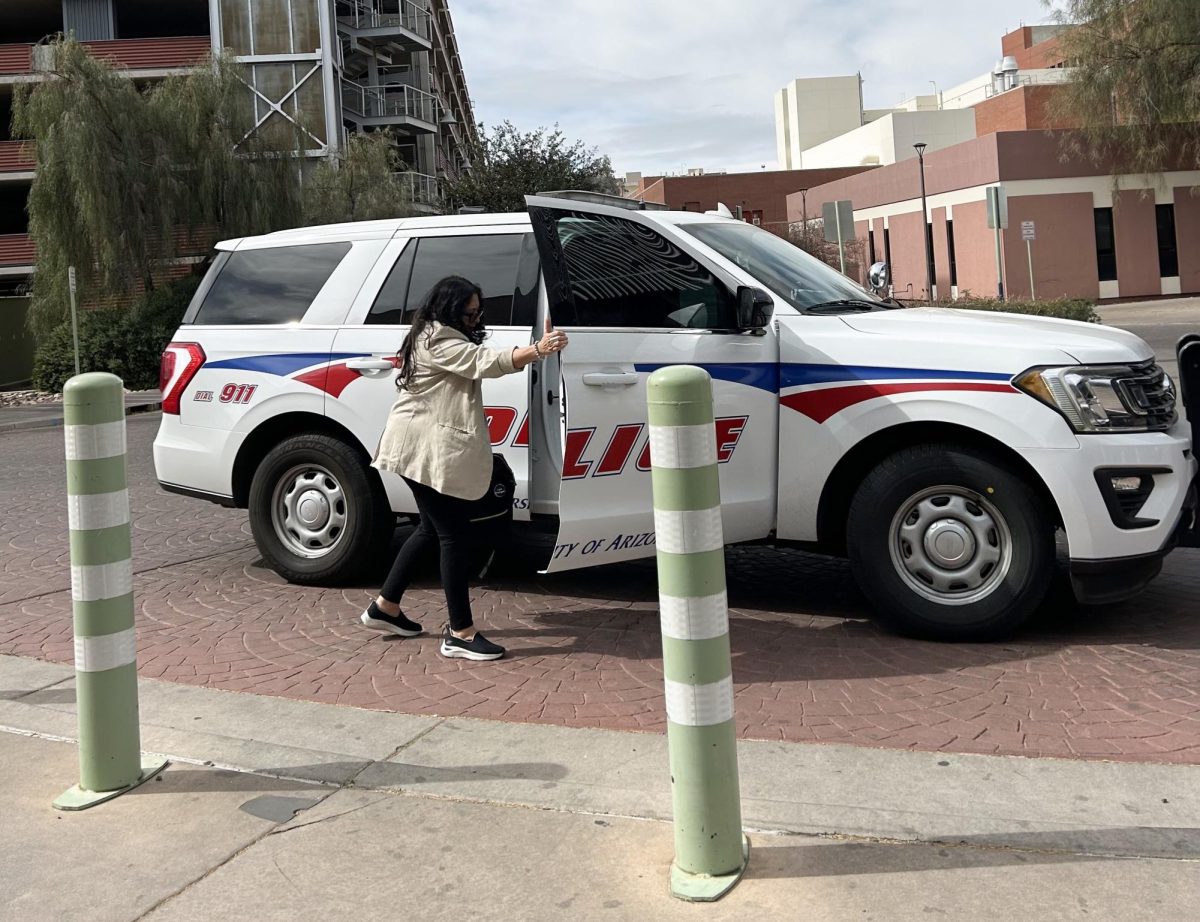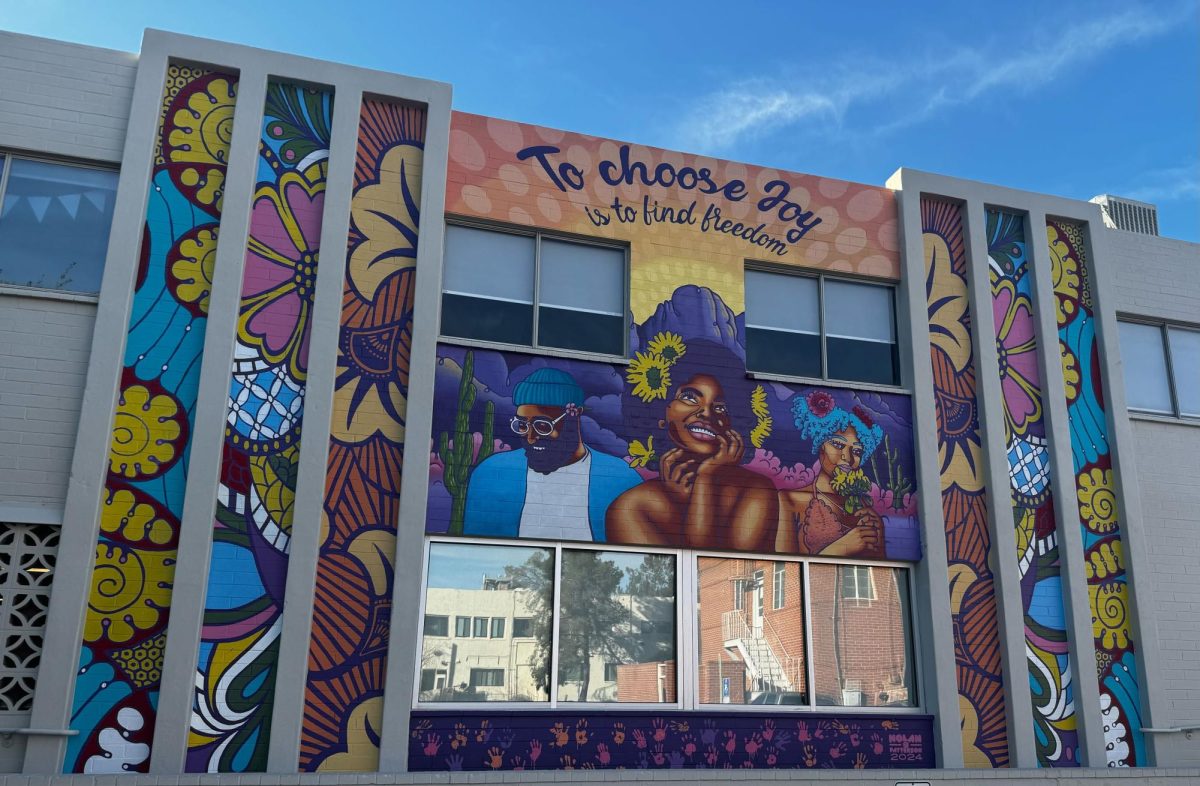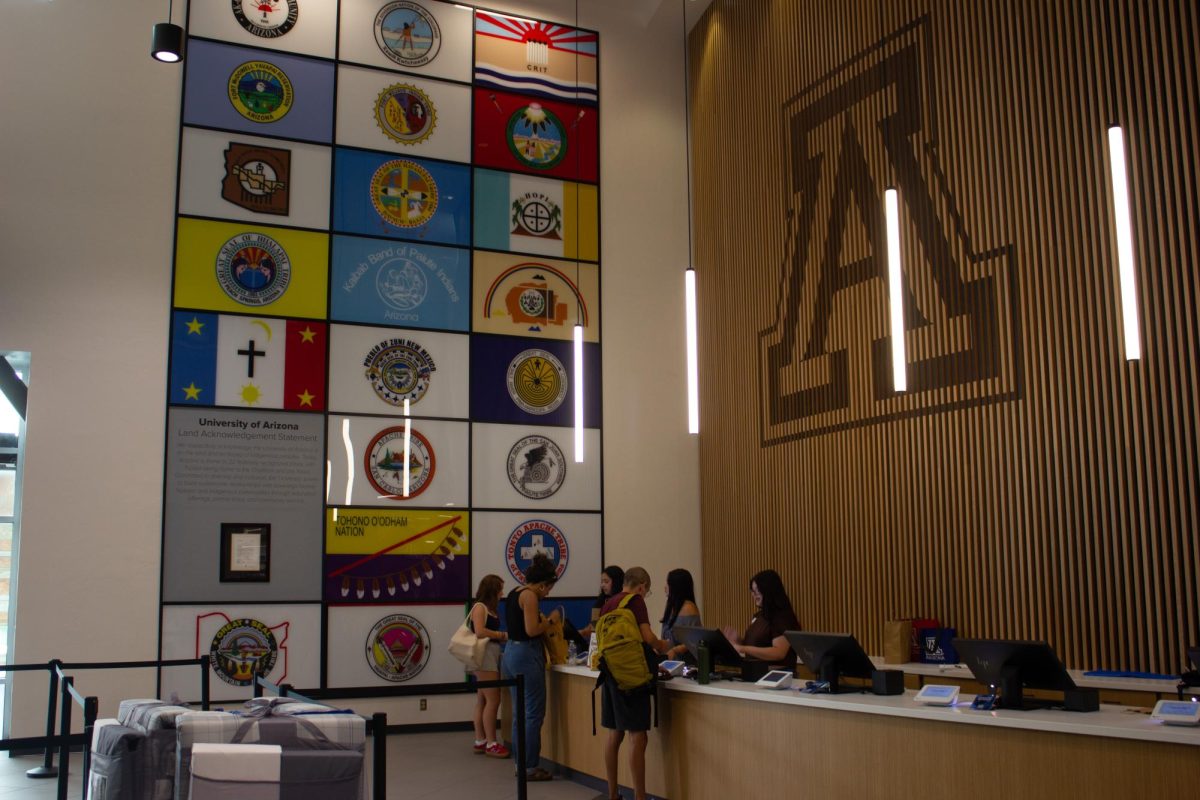The UA Laboratory of Tree-Ring Research has a new home after 75 years in the west portion of Arizona Stadium.
Members of the community poured into the Bryant Bannister Tree-Ring Building, located near Sixth Street, which is near the Mathematics building, to take a tour of the new facility during an open house on Saturday morning.
Within five minutes of the doors opening, approximately 60 people had gathered for a free guided tour, according to Pamela Pelletier, community planner for the Laboratory of tree-Ring Research.
The open house was only set to offer 11 guided tours for the day, but because of the high volume of people, 11 more tours were added to the schedule, Pelletier said. Each tour group consisted of about 20 people.
Scientists were able to talk first-hand with visitors about the types of research currently taking place in their labs.
Ramzi Touchan, a research professor at the lab, showed his visitors a specimen of the oldest tree found in the Eastern Mediterranean and North Africa, his region of study. The specimen was found in Morocco, and has been dated from 882 A.D. to 1788 A.D., according to Touchan.
Just down the hall, Matthew Salzer, a research associate, presented an example of a Great Basin bristlecone pine. This specimen, cut down several years ago in the Snake Range of Nevada, would have been the oldest known living tree in the world. The tree was cut for research purposes by a graduate student at the University of North Carolina, before the student knew how old the tree really was, according to Salzer.
“We can’t say for certain when it germinated and was a very tiny seedling,” Salzer said. “5,000 years was a reasonable guess, but it was at least 4,900 years old.”
The visitors could also explore a few exhibits during the open house. Several specimens of trees were on display, including a huge slab of a giant sequoia. The slab hangs in the center of the first floor of the building and has been dated from 212 A.D. to 1913.
Pelletier said the most successful part of the open house was the opportunity for visitors to actually go inside the labs of various scientists, see their ongoing research and ask questions.
“This is pretty unique … I think for the UA, to have an open house and you can actually come speak with the scientists about the research,” Pelletier said. “I think we’ve really heard from the Tucson community that they’re very interested in science.”
The new building is a big change from the laboratory’s previous home underneath Arizona Stadium. Designed to look like a tree house, it has a multipurpose room that will allow the lab to bring people in to talk about dendrochronology. The basement, which will be entirely dedicated to exhibits, is still under construction, according to Pelletier. The exhibit space will house all of the samples that were over at Arizona Stadium that the lab has not been able to show yet, she said.
“It’s going to be an amazing opportunity for the public to come and look at the research samples that we have,” Pelletier said.
“In addition for … this public outreach of explaining to people what dendrochronology is and why it’s important today.”
Some community members said they saw the benefits of the new location of the lab and the research.
“I thought it was wonderful,” said Clare Burn, a software engineer, of the tour. “It was really interesting to hear about all the work that is going on here … and now they got this big huge building … They deserve it.”









